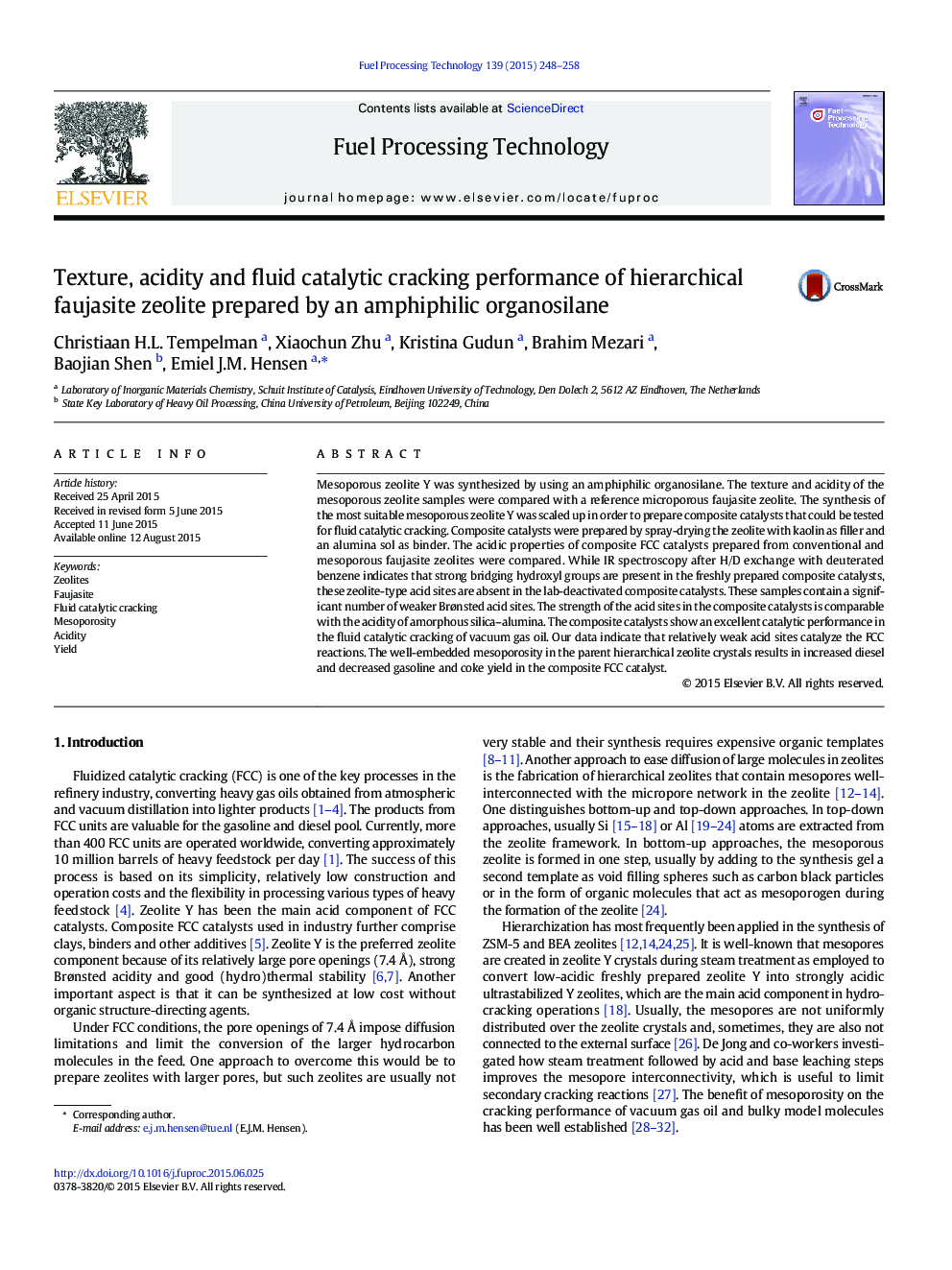| Article ID | Journal | Published Year | Pages | File Type |
|---|---|---|---|---|
| 209452 | Fuel Processing Technology | 2015 | 11 Pages |
•Mesoporous faujasite synthesized using organosilane mesoporogen•Acidity and texture compared with bulk faujasite•Composite catalysts prepared by use of binder•Acidity of the lab-deactivated composite catalysts weak; good FCC performance•Improved diesel yield for mesoporous faujasite composite catalyst
Mesoporous zeolite Y was synthesized by using an amphiphilic organosilane. The texture and acidity of the mesoporous zeolite samples were compared with a reference microporous faujasite zeolite. The synthesis of the most suitable mesoporous zeolite Y was scaled up in order to prepare composite catalysts that could be tested for fluid catalytic cracking. Composite catalysts were prepared by spray-drying the zeolite with kaolin as filler and an alumina sol as binder. The acidic properties of composite FCC catalysts prepared from conventional and mesoporous faujasite zeolites were compared. While IR spectroscopy after H/D exchange with deuterated benzene indicates that strong bridging hydroxyl groups are present in the freshly prepared composite catalysts, these zeolite-type acid sites are absent in the lab-deactivated composite catalysts. These samples contain a significant number of weaker Brønsted acid sites. The strength of the acid sites in the composite catalysts is comparable with the acidity of amorphous silica–alumina. The composite catalysts show an excellent catalytic performance in the fluid catalytic cracking of vacuum gas oil. Our data indicate that relatively weak acid sites catalyze the FCC reactions. The well-embedded mesoporosity in the parent hierarchical zeolite crystals results in increased diesel and decreased gasoline and coke yield in the composite FCC catalyst.
Graphical abstractFigure optionsDownload full-size imageDownload as PowerPoint slide
